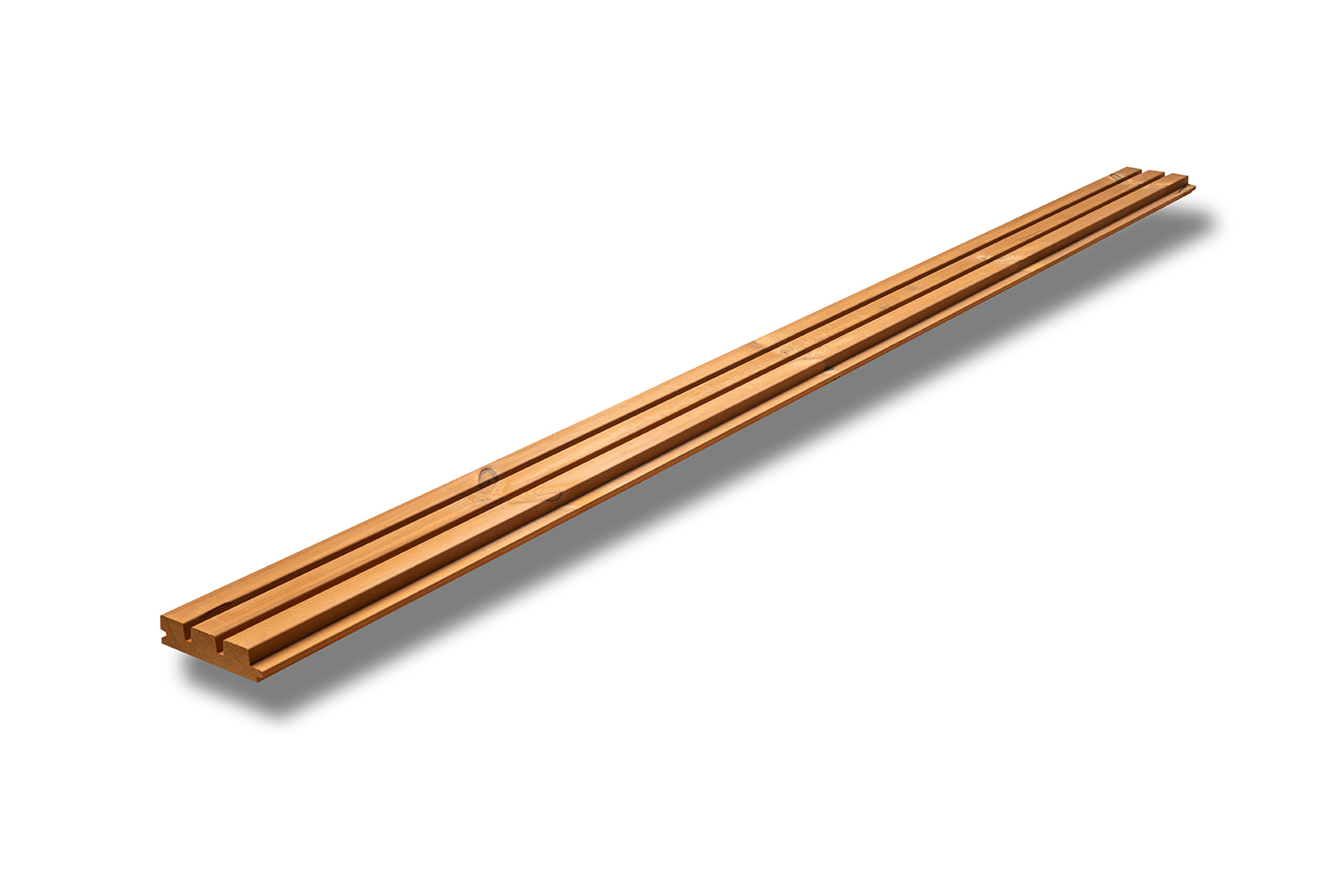Using beautiful Scandinavian-style thermo treated solid wood panels from Intelwood can significantly enhance the aesthetic of your interior or exterior spaces. Here are some ideas and benefits of incorporating these panels:
Interior Design
- Accent Walls: Solid wood panels can create stunning accent walls that add warmth and texture to any room. They can be used in living rooms, bedrooms, or dining areas to draw attention and create a focal point.
- Ceilings: Wood panels on ceilings can give a cozy and rustic feel, reminiscent of Scandinavian cabins. This can be particularly effective in open-plan spaces or large rooms where you want to add a sense of intimacy.
- Furniture and Fixtures: Integrate wood panels into built-in furniture like shelves, cabinets, or even as the backing for bookshelves. This creates a cohesive look and brings the natural beauty of wood into everyday use.
Exterior Design
- Facades: Clad the exterior of your home with solid wood panels for a timeless and elegant look. This not only enhances curb appeal but also provides durability and natural insulation.
- Decking and Fencing: Extend the Scandinavian aesthetic to your outdoor spaces with wooden decks and fences. These can create a seamless transition between the indoors and outdoors, perfect for creating an inviting garden or patio area.
- Pergolas and Gazebos: Solid wood panels can be used in the construction of outdoor structures like pergolas and gazebos, providing shade and a beautiful place to relax and entertain.
Benefits of Intelwood thermo – treated panels:
Intelwood thermally treated solid wood panels offer a variety of benefits for construction and design applications. Here are the key advantages of using thermally treated solid panels:
- Enhanced Durability:
- Increased Resistance to Decay and Insects: The thermal treatment process reduces the wood’s moisture content and changes its chemical structure, making it less appealing to fungi and insects.
- Improved Dimensional Stability: Thermally treated wood exhibits less warping, shrinking, and swelling compared to untreated wood due to the modification of its cellular structure.
- Aesthetic Appeal:
- Rich, Uniform Color: The heat treatment process imparts a deep, rich color to the wood, which can mimic the appearance of exotic hardwoods. This coloration is uniform throughout the wood, not just on the surface.
- Enhanced Surface Quality: The treatment process results in a smoother surface, which can enhance the wood’s visual and tactile appeal.
- Environmental Benefits:
- Sustainable Choice: Thermally treated wood often utilizes locally sourced, fast-growing species, reducing reliance on imported hardwoods and promoting sustainable forestry practices.
- Chemical-Free Process: The modification process uses only heat and steam, avoiding harmful chemicals and making the wood safer for indoor use and environmentally friendly.
- Improved Performance:
- Increased Hardness: While the thermal treatment process can slightly reduce the wood’s overall strength, it generally increases its hardness, making it more resistant to dents and wear.
- Enhanced Insulation Properties: The lower thermal conductivity of thermally treated wood improves its insulation properties, making it a better choice for energy-efficient construction.
- Versatility and Application:
- Wide Range of Uses: Thermally treated solid panels are suitable for a variety of applications, including flooring, wall paneling, decking, siding, and furniture.
- Compatibility with Various Finishes: These panels can be finished with a variety of coatings, stains, and paints, allowing for customization to meet specific aesthetic and functional requirements.
- Cost-Effective Over Time:
- Low Maintenance Requirements: Due to their enhanced durability and resistance to environmental factors, thermally treated wood panels require less maintenance, resulting in lower long-term costs.
- Extended Lifespan: The improved stability and decay resistance of thermally treated wood panels contribute to a longer service life, offering better value over time.
- Health and Safety:
- Non-Toxic: The absence of chemicals in the thermal modification process means that the wood is safe for indoor use and does not off-gas harmful substances.
- Hypoallergenic: The reduced moisture content and stability of the wood can help minimize the growth of mold and allergens, contributing to a healthier indoor environment.
 Saules street 61, Madona
Saules street 61, Madona sales@intelwood.eu
sales@intelwood.eu + 371 25 430 415
+ 371 25 430 415

